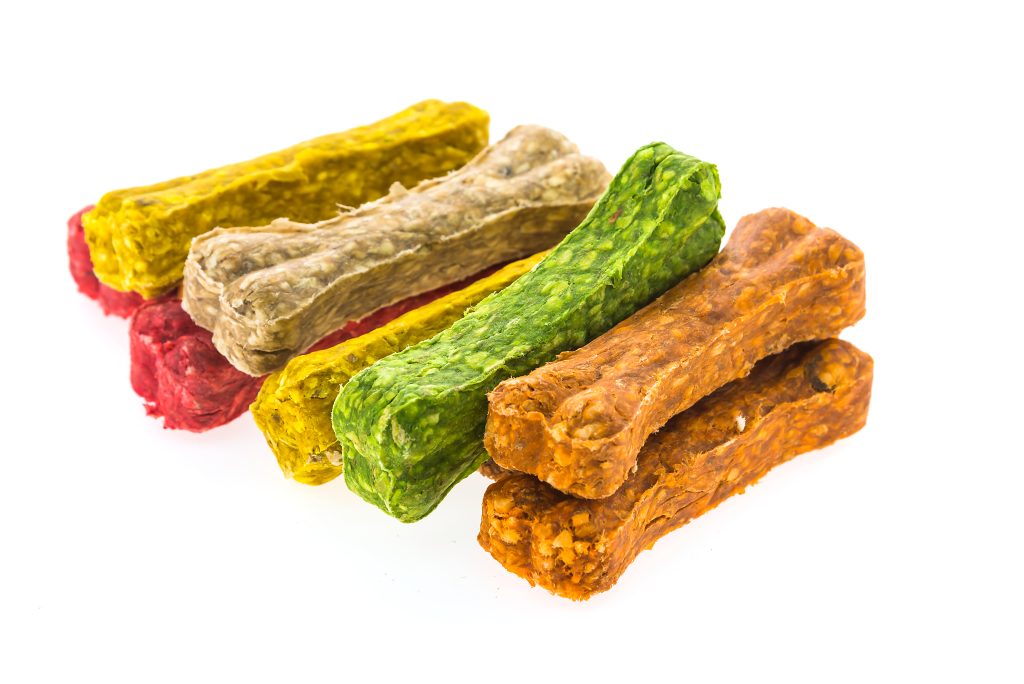Spicy Food for Dogs: Dangers & Safe Alternatives

When it comes to Spicy Food for Dogs, not all spices are safe. Some can cause digestive issues, while others might be harmless in small amounts.
Many pet owners wonder if their furry friends can enjoy spicy treats. Dogs have different digestive systems compared to humans. This means they might not handle spices well. Some spices can cause stomach issues or more serious health problems. Understanding which spices are safe and which are not is crucial.
This guide will help you learn about the potential risks and benefits of giving spicy food to dogs. Keep reading to ensure you make the best choices for your pet’s diet and health.
Benefits Of Spicy Food
Some people wonder if dogs can eat spicy food. The answer is yes but with caution. Spicy food can offer benefits to dogs if given in small amounts. It can enhance their diet and improve their overall health. Let’s explore the nutritional value and digestive health benefits.
Nutritional Value
Spicy food often contains rich nutrients that can be good for dogs. These foods might include spices like turmeric, cinnamon, and ginger. Each spice has its own benefits.
- Turmeric: Helps reduce inflammation and joint pain.
- Cinnamon: Can help regulate blood sugar levels.
- Ginger: Aids in digestion and reduces nausea.
These spices also contain antioxidants. Antioxidants help to fight free radicals in the body. Free radicals can cause cell damage and lead to diseases. Adding spices to your dog’s food can support their overall health.
Spicy foods can be a source of vitamins and minerals. For example, chili peppers contain vitamin C. This vitamin is essential for immune health. Spices like paprika are rich in vitamins A and E. These vitamins are important for skin and eye health.
Digestive Health
Spicy food can also benefit a dog’s digestive system. Certain spices help to stimulate digestion. This can enhance nutrient absorption and reduce digestive issues.
Spices like ginger can calm the stomach. Ginger is known to reduce nausea and vomiting. It can be helpful for dogs with sensitive stomachs.
| Spice | Digestive Benefit |
|---|---|
| Ginger | Reduces nausea |
| Turmeric | Reduces inflammation |
| Cinnamon | Regulates blood sugar |
Moderation is key when feeding spicy food to dogs. Too much spice can irritate their stomach. Always start with small amounts and watch for any adverse reactions.
Mixing spices into your dog’s food can promote better digestion. It can support their immune system and improve overall health.
Risks Of Spicy Food
Spicy food can be a delightful treat for humans but poses risks for dogs. Dogs have different digestive systems and dietary needs. Feeding them spicy food can lead to several health issues. Understanding these risks is important to keep your furry friend safe and healthy.

Gastrointestinal Issues
Feeding your dog spicy food can cause gastrointestinal problems. Dogs’ stomachs are not equipped to handle spicy ingredients. These can lead to vomiting, diarrhea, and stomach pain. These symptoms can make your dog uncomfortable and restless.
Here are some common gastrointestinal issues caused by spicy food:
- Vomiting: Dogs may vomit after eating spicy food. This is their body’s way of rejecting harmful substances.
- Diarrhea: Spicy food can cause diarrhea. This can lead to dehydration and weakness.
- Stomach Pain: Dogs may experience stomach pain. This can make them whimper and avoid eating.
Spicy food can also irritate the digestive tract. This irritation can lead to gastritis or pancreatitis. These conditions require medical treatment and can be severe.
Allergic Reactions
Dogs can have allergic reactions to spicy food. These reactions can range from mild to severe. Signs of allergies include itching, red skin, and swelling. These symptoms can make your dog very uncomfortable.
Common allergic reactions include:
- Itching: Dogs may scratch themselves excessively. This can lead to skin infections.
- Red Skin: The skin can become red and inflamed. This is a sign of irritation.
- Swelling: Dogs may develop swelling around the mouth or face. This can be dangerous if it affects breathing.
Some dogs may have severe reactions. These include difficulty breathing or anaphylactic shock. These conditions require immediate veterinary attention.
It’s important to monitor your dog’s reaction to any new food. If they show any signs of allergies, consult a vet immediately.
Safe Spices For Dogs
Spicy food for dogs can be a tricky subject. Some spices are safe and even beneficial for dogs, while others can be harmful. Knowing the difference is important for your pet’s health. This post will cover two safe spices for dogs: turmeric and cinnamon.
Turmeric
Turmeric is a spice with many health benefits. It’s known for its anti-inflammatory properties. This can help dogs with arthritis or other inflammatory conditions.
Here are some of the benefits of turmeric for dogs:
- Anti-inflammatory: Helps reduce swelling and pain.
- Antioxidant: Supports overall health by fighting free radicals.
- Digestive aid: Can help improve digestion and reduce gas.
It’s important to introduce turmeric slowly into your dog’s diet. Start with a small amount and watch for any adverse reactions. A common way to give turmeric is by making a paste.
| Ingredient | Amount |
|---|---|
| Turmeric powder | 1/2 cup |
| Water | 1 cup |
| Black pepper | 1 1/2 tsp |
| Coconut oil | 1/4 cup |
Mix these ingredients and cook on low heat until a paste forms. This can be added to your dog’s food in small amounts.
Cinnamon
Cinnamon is another spice that is safe for dogs in small amounts. It has several health benefits, including helping to regulate blood sugar levels. This is particularly useful for dogs with diabetes.
Some benefits of cinnamon for dogs include:
- Anti-inflammatory: Helps with joint pain and swelling.
- Blood sugar regulation: Helps manage diabetes.
- Antibacterial: Helps fight infections.
When giving your dog cinnamon, it’s best to use Ceylon cinnamon. This type is safer than the more common Cassia cinnamon. Always start with a small amount.
Here is a simple way to introduce cinnamon to your dog’s diet:
- Sprinkle a small amount over their food.
- Mix a pinch into homemade dog treats.
- Combine with other beneficial foods like honey or yogurt.
Remember to monitor your dog for any signs of allergies or digestive issues. If you notice any problems, stop giving the spice and consult your vet.
Spices To Avoid
Dogs are our beloved pets, and we want the best for them. Food plays a big role in their health. While some human foods are safe for dogs, others can be harmful. Spicy food is one of those areas of concern. Some spices are not safe for dogs. It’s important to know which spices to avoid to keep our furry friends healthy.

Chili Powder
Chili powder is a common spice in many households. But it is not safe for dogs. It contains capsaicin, which can cause stomach issues in dogs. Here are some problems chili powder can cause:
- Stomach pain
- Diarrhea
- Vomiting
Dogs have sensitive digestive systems. Even a small amount of chili powder can cause discomfort. It can also irritate their skin and eyes. If chili powder gets into a dog’s eyes, it can cause redness and pain. Always keep spicy foods out of reach from dogs.
Garlic
Garlic is another spice that is harmful to dogs. It is part of the Allium family, which also includes onions. Garlic can cause serious health issues in dogs. Here are some risks:
- Anemia
- Weakness
- Breathing problems
Garlic contains thiosulfate, which is toxic to dogs. Even in small amounts, garlic can damage a dog’s red blood cells. This can lead to anemia. Symptoms of garlic poisoning can take a few days to appear. They include lethargy, rapid breathing, and dark-colored urine.
If a dog consumes garlic, it’s important to seek veterinary care immediately. Prevention is the best approach. Always keep foods with garlic away from dogs. Be cautious with foods that might contain garlic powder, like sauces and seasoning mixes. This ensures their safety and well-being.
How To Introduce Spicy Food
Introducing spicy food to dogs can be a bit tricky. Dogs have different taste buds and digestive systems than humans. It’s important to be careful and gradual when giving them spicy food. This guide will help you understand how to safely introduce spicy food to your furry friend.
Start Small
Begin with small amounts of spicy food. This will help your dog’s body adjust. Here are some tips:
- Mix a tiny bit of spice into their regular food.
- Observe their reaction. If they like it, you can continue.
- Avoid very hot spices. Stick to mild ones like turmeric or ginger.
Here’s an example table of safe spices and their benefits:
| Spice | Benefit |
|---|---|
| Turmeric | Anti-inflammatory |
| Ginger | Soothes stomach |
Always consult your vet before introducing any new food. Some dogs may have allergies or sensitivities, so starting small is the safest option.

Monitor Reactions
Once you introduce spicy food, watch your dog closely. This will help you see if they are having any issues. Look out for these signs:
- Diarrhea or vomiting
- Excessive drooling
- Lack of appetite
- Scratching or licking their mouth
If you notice any of these signs, stop giving them spicy food. Contact your vet if symptoms persist. It’s important to monitor their reactions to keep them safe.
Also, make sure your dog has plenty of water. Spicy food can make them thirsty. Keep an eye on their water intake. Staying hydrated is key.
Monitoring your dog’s reactions ensures they enjoy their food safely. It also helps you understand their preferences better.
Homemade Spicy Dog Treats
Spicy food for dogs can be a fun and tasty treat. Many dogs love strong flavors. Homemade spicy dog treats are easy to make. You can control the ingredients. This ensures the treats are safe for your pet. Spicy treats can also stimulate your dog’s senses. They add variety to their diet. Let’s explore some recipe ideas and ingredient tips.
Recipe Ideas
Creating spicy dog treats at home is simple. Here are a few ideas:
- Spicy Peanut Butter Biscuits: Mix peanut butter, flour, eggs, and a pinch of turmeric. Roll out the dough and cut into shapes. Bake until golden brown.
- Chicken and Pumpkin Bites: Combine cooked chicken, pumpkin puree, and a bit of cinnamon. Form into small balls and bake.
- Sweet Potato and Apple Chews: Blend cooked sweet potato, grated apple, and a dash of ginger. Spread on a baking sheet and dry in the oven.
These treats are not only spicy but healthy. They include proteins and vitamins. Your dog will love them!
Ingredient Tips
Choosing the right ingredients is crucial. Here are some tips:
| Ingredient | Benefits |
|---|---|
| Turmeric | Anti-inflammatory and antioxidant properties. |
| Cinnamon | Improves digestion and fights bacteria. |
| Ginger | Soothes the stomach and reduces nausea. |
Always use fresh ingredients. Avoid any additives or artificial flavors. Check for any allergies your dog might have. Introduce new flavors slowly. Watch for any adverse reactions. Your dog’s health is the priority.
With these tips, you can make safe and tasty spicy treats for your dog.
Cultural Attitudes Towards Spicy Food
Spicy food is common in many human diets. But is it safe for dogs? Different cultures have unique views on feeding spicy food to pets. Understanding these cultural attitudes can help pet owners make informed choices.
Global Perspectives
People around the world have varied opinions on feeding dogs spicy food. In some cultures, dogs are strictly fed bland diets. In others, they may share the same spicy meals as their owners. Here are some perspectives from different regions:
- Western Countries: In the US and Europe, veterinarians often advise against spicy food for dogs. The belief is that it can cause stomach issues and discomfort.
- Asian Countries: In places like India and Thailand, dogs sometimes eat spicier food. This is because local diets are naturally spicy. However, moderation is key.
- Latin America: Some regions in Latin America share their flavorful meals with pets. But there is growing awareness about the potential health risks.
Health Concerns: Veterinarians worldwide stress that spicy food can harm dogs. Symptoms may include vomiting, diarrhea, and stomach pain. It’s important to know your pet’s limits and consult a vet if unsure.
Regional Variations
Different regions have their unique way of feeding pets. These variations are influenced by local cuisine and cultural habits. Let’s explore some of these regional practices:
| Region | Feeding Practices |
|---|---|
| North America | Prefer bland, specially formulated dog food. Spicy food is usually avoided. |
| South Asia | Occasionally share spicy food with pets. Use spices like turmeric and ginger, believed to have health benefits. |
| Middle East | Some regions include mild spices in pet diets. Avoid very hot spices to prevent health issues. |
In these regions, dog owners must be cautious. Even mild spices can sometimes cause problems. Feeding practices should always consider the dog’s health and well-being.
Overall, while some cultures do allow spicy food for dogs, it is generally advised to avoid it. Always prioritize your pet’s health. Consult a veterinarian before introducing any new food items.
Consulting A Vet
Many dog owners are curious about feeding their pets spicy food. It is important to know that dogs have different dietary needs than humans. Spicy foods can cause problems for their digestive system. Consulting a vet before introducing any new food is essential. This ensures the health and safety of your furry friend.
When To Seek Advice
Always seek advice from a vet before giving your dog spicy food. Here are some situations when consulting a vet is crucial:
- If your dog has pre-existing health conditions like diabetes or heart problems
- If your dog shows signs of allergic reactions after eating spicy food
- If your dog is very young or very old
- If you notice changes in behavior or appetite
Vets can provide specific recommendations based on your dog’s breed, size, and health status. They can also suggest safe alternatives to spicy foods.
Importance Of Professional Guidance
Professional guidance is vital for your dog’s health. Vets have the knowledge and experience to assess potential risks. They can help you understand the impact of spicy foods on your dog’s digestive system.
Here are some reasons why professional guidance is important:
| Reason | Explanation |
|---|---|
| Prevent Digestive Issues | Spicy foods can cause stomach pain and diarrhea. |
| Identify Allergies | Vets can recognize allergic reactions early. |
| Nutritional Balance | Ensures your dog gets a balanced diet. |
| Long-term Health | Prevents chronic health problems. |
Consulting a vet helps you make informed decisions. This keeps your dog healthy and happy.
Frequently Asked Questions
Q1: Can I Feed My Dog Spicy Food?
A1: No, you should not feed your dog spicy food. Spicy foods can cause stomach upset, pain, and digestive issues. Stick to dog-safe foods.
Q2: Can Dogs Feel The Heat Of Spicy Food?
A2: Dogs don’t have taste receptors for spiciness. They can’t feel the heat like humans do. Spicy food can still upset their stomach.
Q3: What Spices Are Ok For Dogs?
A3: Dogs can safely consume small amounts of turmeric, ginger, cinnamon, and parsley. Always consult your vet before adding new spices to your dog’s diet. Avoid giving garlic, onion, salt, and nutmeg.
Q4: Can Animals Eat Spicy Food?
A4: Most animals can’t tolerate spicy food. Capsaicin, the compound in chili peppers, can cause discomfort and health issues. Avoid feeding spicy food to pets.
Q5: Can Dogs Eat Spicy Food?
A5: No, spicy food is not safe for dogs. It can cause stomach issues.
Conclusion
Spicy food for dogs can be harmful. It may cause digestive issues. Always choose dog-friendly treats. Ensure their diet is safe and healthy. Consult your vet for advice. Your dog’s well-being is a top priority. They deserve the best care. Keep their meals mild.
Happy dogs make happy owners. Avoid spicy foods to keep them healthy. They trust you with their health. Make informed choices for your furry friend. Enjoy safe and tasty meals together.







